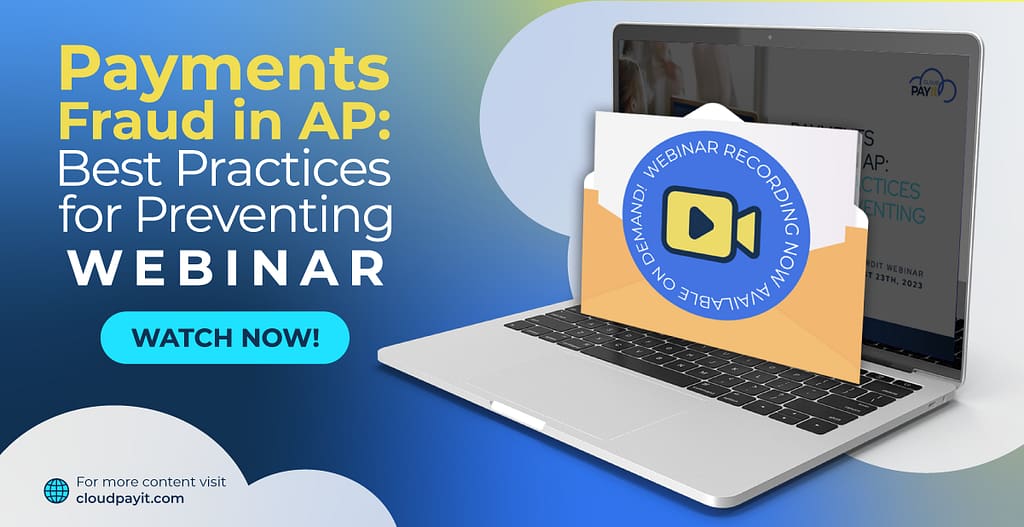Before looking at the different types of payment fraud, it is sobering to consider the prevalence of payments fraud across large and medium-sized businesses.
In 2022 78% of organizations experienced an attempt and/or actual payments fraud, 71% of organizations were targeted by Business Email Compromise (BEC), and 59% of organizations reported that their AP department was targeted by email phishing scams.
There are several types of fraud that can occur in AP Payments. Payments fraud, most predominantly, includes:
- Check Fraud
Criminals can carry out check fraud by altering the payee’s name, the amount of the check, or by creating counterfeit checks. Moreover, they often use stolen checks, with the account information right at the bottom, to make unauthorized payments. 63% of organizations were prey to check fraud in 2022. - Invoice Fraud
This type of fraud takes place when a criminal submits false or inflated invoices for payment. They can impersonate a legitimate vendor or create a fraudulent vendor account to execute the scam. Shockingly, 37% of businesses lack the means to prevent an invoice scam. Moreover, it’s important for organizations to implement robust preventive measures and controls to counteract such fraudulent activities. - Wire Transfer Fraud
A criminal assumes the identity of a genuine vendor or employee, persuading an employee to transfer funds to either a counterfeit vendor or a legitimate vendor’s account that the fraudster has seized control of. Scammers find this type of fraud appealing due to the fact that the fraudulent outcome becomes untraceable within a brief period. Frequently, wire transactions are executed and become almost irrevocable after 72 hours. In this scheme, transition words like “moreover,” “in addition,” and “furthermore” can be employed to enhance the flow of the text.

- ACH Fraud Criminals use ACH fraud to initiate unauthorized electronic fund transfers from a company’s account to their own. They may employ stolen bank details for deceitful transactions. Notably, ACH fraud prevails, accounting for 30% of fraud in 2022.
- Spear Phishing Fraud Involves manipulating email or electronic communication to mimic a trusted source, projecting authenticity. However, underneath lies a deceptive scheme aimed at defrauding organizations, particularly financially. This strategy frequently combines reputable source cloning with malicious software installation on target devices.
Email (6) predominantly serves as the chosen communication method for these illicit demands. This sophisticated tactic plays on human trust and the guise of legitimacy, making it crucial for individuals and organizations to stay vigilant against such fraudulent attempts.
Acknowledged as Business Email Compromise (BEC), an impersonator mimics coworkers or superiors in email requests. Moreover, this method remains highly elusive and seemingly genuine. BEC efficiently pressures unsuspecting employees (7), concurrently equipping the fraudster with crucial tools (malicious links, email attachments) for scam execution.
The process initiates when an employee opens an email, discreetly introducing malicious software onto their computer. Consequently, upon the employee’s compliance with the request, the fraudster gains access to the essential information required to deploy the malicious software without the employee’s awareness. This sequence of events can lead to significant payment delays, intricate investigations, and additional KYC/KYB obligations. Remarkably, a staggering 90% of data breaches occur due to phishing, wherein the mechanism of Business Email Compromise serves as the primary method.
With all these types of fraud and more methods surely to come, solutions to track and identify fraud at the source becomes ever more important. Contact your REQUORDIT sales rep today to find the best tools available to mitigate fraud and give your organization peace of mind.
*All sources of data referenced in CloudPAYit’s Accounts Payable Fraud Prevention Playbook, available upon request. Contact sales@requordit.com today!
